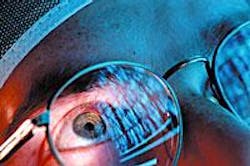Cleft lip/Cleft palate
by Cathleen Terhune Alty, RDH
The search for answers
Imagine a puzzle with literally millions of pieces, each piece similar to another in size and shape, but when put together, form a picture that could enhance the lives of millions of children. This scenario is not unlike what researchers are attempting to do with our human genetic code as they search for the gene combinations that cause facial clefting.
According to the National Institute of Dental and Craniofacial Research (NIDCR), every 65 minutes a child is born with cleft lip, with or without cleft palate. Cleft lip and cleft palate occur about twice as often in boys as in girls, while cleft palate alone is slightly more common in girls. Clefting can be the principal birth defect or a single symptom in literally hundreds of different syndromes. Over the next few years, the affected child will require multiple surgeries and comprehensive care from a team of health-care professionals, including medical, dental, speech and hearing, pediatrics, and psychosocial. Medical costs approach nearly $1 billion each year, not to mention the emotional costs and self-esteem issues the child and family face.
The Cleft Palate Foundation reports that facial-clefting disorders are among the most common human birth defects. Cleft lip and/or palate is the fourth most common birth defect in the United States, affecting about one out of every 700 births.
Cleft lip is a separation of one or both sides of the lip, ranging in size from a small notch in the upper lip to a complete separation of the lip extending to the ala of the nose. Often there will also be a separation of the maxillary alveolar ridge, which may cause a lateral incisor to be malformed or missing.
Cleft palate is an opening in the roof of the mouth, and can range from a bifid uvula at the rear of the mouth to a cleft that extends the entire length of the palate, affecting both hard and soft palatal tissues. A cleft is a separation of the palate; it does not mean the palate is missing, although it often appears that way. There are various forms of cleft palate, including a submucos cleft palate that is covered by mucosa, making the cleft difficult to see upon visual inspection.
Facial clefts are birth defects which occur very early in pregnancy, the lip forming at about seven weeks in utero and the palate at 11 weeks. The cause of clefting is unclear, but it is thought to be caused by a combination of genetic and environmental factors. Only a few environmental factors have been scientifically documented to increase the odds of clefting, including heavy alcohol consumption, smoking, and certain prescription medications, such as anti-convulsants.
Attempts to find genetic clefting defects in human populations have thus far proven inconclusive, so researchers have turned to the laboratory mouse to help sort out the pieces of the puzzle. Recent genetic studies reported by the NIDCR have shown that rather than a single gene, it is the presence of a broken "gene circuit." Genes and gene products normally interacting with one another to direct palate formation somehow short-circuit, causing cleft palate in mice.
Dr. Michael Melnick, one of the researchers who conducted the study at the University of Southern California, believes the mouse model will provide clues that may help unravel the mysteries of cleft palate. Although Dr. Melnick thinks it is still too early to pinpoint the underlying causes of clefting, he says, "It is apparent from studying complex disorders like cleft palate that simply identifying genetic differences between healthy and affected individuals is not enough to explain the cause of the disorder. We must know what products are derived from the genes in question and what other genes and molecules are affected in the chain of events that leads to the formation of the palate."
Other areas of ongoing research about clefting include the impact of maternal nutrition, vitamin supplements,and smoking cessation. Researchers also hope eventually to be able to screen people for the presence of predisposing factors that could result in clefting.
The American Cleft Palate-Craniofacial Association (ACPA) reports that children with cleft lip and/or palate may face multiple concerns, including early feeding and nutritional problems that can lead to growth and development deficiencies, ear infections and hearing loss, speech and resonance inadequacies, dental-facial abnormalities, and psychological adjustment issues. Dental care must be specialized and may include orthodontic intervention, prosthodontic appliances, and speech appliances, as well as routine preventive and restorative procedures. Because of the specialized nature of care, a team approach is imperative.
These teams are designated by the ACPA and are called a Cleft Palate Team (CPT) or Craniofacial Team (CFT), depending on the health-care professionals who comprise the group. Approximately 250 teams of experienced professionals work together to coordinate the care required in the proper sequence to ensure that treatment is consistently provided to a child.
William P. Magee, DDS, MD, is the director of a CPT/CFT at Children's Hospital of the King's Daughter in Norfolk, Va. Dr. Magee says, "The team offers multifaceted care for a child with a cleft; you could call it one-stop shopping for all of their needs. It helps the parents because they would go crazy trying to coordinate the child's care themselves, plus it gives them face-to-face communication with health-care professionals. By offering a consensus of care, we are able to coordinate the proper care at the right time."
Dr. Magee says that his team was one of the first to operate on children with clefts during the first week of life. By performing surgeries at a very young age, there are several benefits:
- The child is better nourished due to the ability to suck more effectively, thus increasing his chances for survival.
- It is better for the parents because they are usually very anxious to have the child's appearance improved.
- The child is so young that he has no memory of the problem.
"By taking care of these kids early, we set the stage for them to have a more normal life," Dr. Magee shares. "It's like having an arm in a cast. We know the muscles atrophy rapidly when not used. If the muscles of the face aren't functioning properly, there is atrophy and a smaller chance of them developing normally. Unfortunately, some parents don't know this option exists, and they end up waiting months - even years - for things to happen. It really changes the attitude of the family to get in there and get it closed up."
One of the key aspects of treatment is orthodontics. Dr. Magee compared the maxillary arch to a Roman arch. "If you knock out a block of a Roman arch, the whole thing collapses. You need orthodontics to re-expand the arches; then we come in with bone grafts to fill in the space. The teeth need to be in place before any bone grafts can take place." Dr. Magee said they use cranial bone grafts instead of painful hip grafts. There is a lack of pain fibers in skull bone. It is the same type of bone as facial bone, and any scarring can be hidden in the hair.
Good oral hygiene is crucial to the child's care, particularly when it comes to orthodontic treatment. Dr. Magee stressed that the teeth need to be firmly anchored, because they are the levers used to move the bone into position. Proper brushing and preventive procedures, such as sealants, are important to the restoration of the mouth's structure and function.
The pieces of the puzzle to solve facial clefting may not all be in place yet, but researchers are actively searching for ways to bring an end to this problem. All we know is that it will be a beautiful scene when it's finished, because children will no longer suffer from disfiguring facial clefting.
Cathleen Terhune Alty, RDH, is a frequent contributor. She is based in Clarkston, Mich.
How dental professionals can help
- Since smoking and alcohol consumption are major risk factors for cleft lip and/or cleft palate, we need to inform people contemplating pregnancy of this risk. Studies have shown that the more a pregnant woman smokes (10 or more cigarettes per day) or drinks alcohol (10 or more drinks per week), the greater her chances of having a child with cleft lip and/or cleft palate.
- Encourage pregnant women to take their prenatal vitamins. It has been well-documented that neural-tube defects can be decreased with the additions of vitamin B6 and folic acid. Some researchers also believe that this may be a key component in cleft prevention.
- When children are in your office, listen to their speech. If they talk in a very nasal manner, they may have a palate that is too short or an undiagnosed cleft. Upon oral examination, check for bifid uvula and the length of soft-palate tissues. If suspicions arise, ask the parent about any feeding problems, particularly with sucking a bottle, drinking from a sippy cup or using a straw, or food coming through the child's nose when he eats. This may mean the child can't create a vacuum with his mouth.
Where to go for more information
- American Cleft Palate-Craniofacial Association /Cleft Palate Founda tion: www.cleftline.org
- Operation Smile: www.operationsmile.org
- Smiles Cleft Lip and Palate Support Group: www.cleft.org
- National Institute of Dental and Craniofacial Research: www.nidr.nih.gov
copyright Chronis Jons/Getty Images

